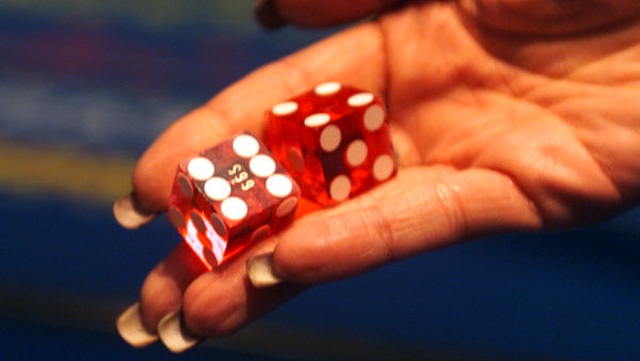
© Bob Carey/LATimes
Scientists have found a way to tinker with a brain switch that regulates whether we make choices based on experience or we resort to rolling the dice.
Their study, published online Thursday in the journal
Cell, no doubt frustrated the lab rats that were pushed to the limit of their strategic abilities. But the results could offer insights into disorders and diseases that affect attention, memory and cognition.
Researchers managed to tinker with a switch that shifts rats from strategic behavior to random choices. The results could shed light on the cellular level of decision making and offer new insight into neurodegenerative diseases such as Alzheimer's and Parkinson's. (Cell)
"Our brains have evolved to be strategic, so we have evolved to use our past experience to optimize future choice," said lead investigator Alla Y. Karpova, a neuroscientist at the
Howard Hughes Medical Institute's Janelia Research Campus in Virginia.
"Against weak competitors, a strategic approach is probably useful, because if you figure out the approach of the opponent, you can actually do better than when you're just random. You can even out-compete them," Karpova said.
But random exploration may be more appropriate to a new situation full of mixed signals, where experience offers no guide. Some part of the brain has to decide
how to decide.
Researchers set out to find how and where such choices are made. They created three computer opponents with increasingly tough strategies to punish patterns in how rats sought selected holes to poke their noses in, looking for food. One was a bit lenient; the second, a bit less forgiving; and the third, strict -- it was programmed to learn from the rat and thwart its strategy.
"When animals initially played against the weak competitors, they appeared to maintain a strategic approach, just like people have observed before with primates," Karpova said. "But when we put them up against a very sophisticated competitor ... the animals switched to the random mode."
And they got stuck there, for hundreds of trials.
Researchers weren't done. They created a new brain-buster. It gave higher rewards for a certain pattern of pokes (such as right-right-left) but also mild reward rates (16%) for non-patterned responses.
We can completely transform animals that are basically stuck in this random mode into strategic decision makers. - Alla Karpova, neuroscientist, Howard Hughes Medical Institute
The "strategic" rodents that had played against competitors one and two beat the odds at the hidden pattern task. Their reward rates, about 20%, indicated that sticking to strategic thinking helped them uncover the hidden pattern. Those that had first played the sternest computer taskmaster earned just a 14.5% reward rate, below even the random rate.
"They were completely blind to the sudden availability of a simple strategy that would be beneficial," Karpova said. "They got stuck in this random mode."
More trials and some simulations strengthened the researchers' hunch that they had pushed rats beyond the guidance of feedback and mental models. Now it was time to tinker with brain chemistry.
Humans are adept at building internal models for strategic thinking, and scientists of late have highlighted a key role for the anterior cingulate cortex. That collar-shaped area in the upper front of the brain is a bit of a neurological elevator, relaying signals between the emotion-related areas of the brain and the cognitive areas higher up. So it has a role in a lot of basic functions, from mediating anxiety and attention to making complex correlations.
Scientists think that's the home of the mental models that help us make decisions based on experience and feedback.
Suppressing this area had a strong effect on strategy-based performance in rats up against the weaker competitors, but almost none against rodents faced with the toughest opponent, the study found. Those rats still seemed to roll dice.
Nothing works by itself in the brain, though. Researchers have found that the anterior cingulate cortex gets input from the locus coeruleus, a pea-sized area down in the brain stem that is a factory for norepinephrine. It's throught that stress-related neurotransmitter that the locus coeruleus seems to affect the sensory, memory and attention circuits that help us to discern what's relevant and to make decisions. Damage at this level can have severe effects;
Alzheimer's and Parkinson's disease wreak havoc in this area.
Stimulating this tiny chemical factory changed the behavior of the "strategic" rats that had faced the somewhat difficult competitor two. Faced with the baffling hidden pattern task, they performed more like the rats that had randomly poked snouts in holes. A jolt of norepinephrine appeared to have untethered their behavior from experience.
Next, researchers suppressed production of norepinephrine. Sure enough, the rats formerly rolling dice against the toughest competitor suddenly performed well in the hidden pattern task. Their ability to let experience be their guide was restored.
"We can completely transform animals that are basically stuck in this random mode into strategic decision makers," said Karpova.
Results will have to be replicated, and scientists will re-examine the data and experiment paradigm. Many scientists openly wonder how the brain, an order-producing, calculating organ, could generate random behavior. Some doubt whether there is such a phenomeonon as random decision making.
But researchers believe they are at least homing in on the small-scale machinery of choice, which could open up paths toward repairing it when it goes awry.
"We have an opportunity to really get at a mechanistic understanding of the decision process, how decisions happen at the level of individual neuronal networks," said Karpova. "How does a neuronal network ... store something so abstract as our internal model of the world?"
Reader Comments